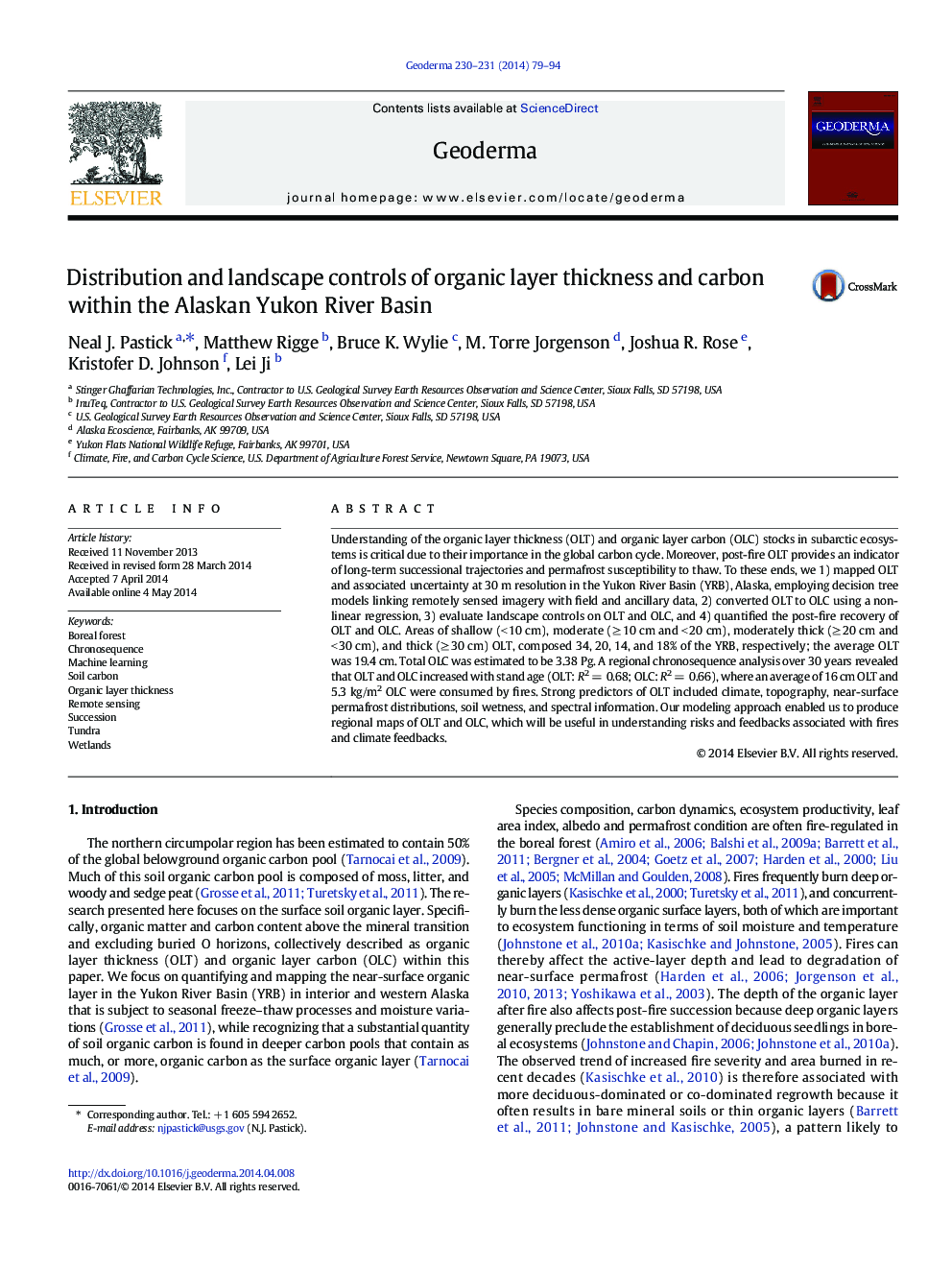| کد مقاله | کد نشریه | سال انتشار | مقاله انگلیسی | نسخه تمام متن |
|---|---|---|---|---|
| 4573235 | 1629470 | 2014 | 16 صفحه PDF | دانلود رایگان |
• Regional scale mapping of organic layer thickness within interior Alaska
• Quantification of environmental factors controlling soil organic layer stocks
• Spatially explicit estimations of uncertainty
• Landscape level quantification of post-fire recovery of organic layer thickness and carbon
Understanding of the organic layer thickness (OLT) and organic layer carbon (OLC) stocks in subarctic ecosystems is critical due to their importance in the global carbon cycle. Moreover, post-fire OLT provides an indicator of long-term successional trajectories and permafrost susceptibility to thaw. To these ends, we 1) mapped OLT and associated uncertainty at 30 m resolution in the Yukon River Basin (YRB), Alaska, employing decision tree models linking remotely sensed imagery with field and ancillary data, 2) converted OLT to OLC using a non-linear regression, 3) evaluate landscape controls on OLT and OLC, and 4) quantified the post-fire recovery of OLT and OLC. Areas of shallow (< 10 cm), moderate (≥ 10 cm and < 20 cm), moderately thick (≥ 20 cm and < 30 cm), and thick (≥ 30 cm) OLT, composed 34, 20, 14, and 18% of the YRB, respectively; the average OLT was 19.4 cm. Total OLC was estimated to be 3.38 Pg. A regional chronosequence analysis over 30 years revealed that OLT and OLC increased with stand age (OLT: R2 = 0.68; OLC: R2 = 0.66), where an average of 16 cm OLT and 5.3 kg/m2 OLC were consumed by fires. Strong predictors of OLT included climate, topography, near-surface permafrost distributions, soil wetness, and spectral information. Our modeling approach enabled us to produce regional maps of OLT and OLC, which will be useful in understanding risks and feedbacks associated with fires and climate feedbacks.
Journal: Geoderma - Volumes 230–231, October 2014, Pages 79–94
